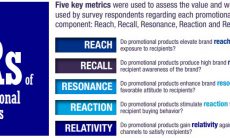We all have heard the buzz about Big Data and in the B2C world it seems to make some sense considering the vast amount of unstructured social information/data that’s available. For 99.9% of B2B companies, Big Data either doesn’t apply or is way down the road. Why is this true? For starters, most B2B companies haven’t even harnessed their basic data and developed a functional marketing database, or in other words their data is relatively “dumb.”
So now you’re asking, what’s Smart Data? It’s simply the combination of the most logical and available data, which when used, generates a result. Sound too basic? Not really, and here’s why. Most B2B data has been gathered from a variety of sources based on an even wider variety of sales and marketing reasons. Common examples are: purchased lists, responses from marketing campaigns, qualified lead lists, visitors to trade show booths, webinar registrations, sales staff CRM inputs, inbound inquiries, survey results, and of course, the transaction records held in accounting. At this time, I’ll leave out unstructured social data even though it exists.
For all these activities, there was no proactive data strategy in play. Data just came in based on these tactical activities and the related data fields. This data now resides in the capture system/software attached to the tactical activity, and in essence sits there and decays over time.
We all know this – it’s not news! We also know that an integrated marketing and sales database in the hands of a data scientist (a new job description) would yield actionable insight and results. So why haven’t B2B companies aggressively attacked this glaring problem? Here are 5 reasons why.
- It’s unexciting – eyes glaze over when data is discussed and nobody wants the job.
- It’s unknown – no one on staff really knows or is educated about B2B data.
- It’s scary – people quickly lose all eye contact when RFM or CHAID are mentioned.
- It’s difficult – even the IT department will say this.
- It’s hard to justify – results are hard to predict and this budget would be a new one.
But the most common one is that there is no data strategy! That’s right – it’s all about tactics and not a long term vision of an actionable marketing and sales database.
Seven Steps to a B2B Data Strategy and Plan
When working with firms who have many prospects and customers, multi-channel marketing activities and data silos, we have found this seven step process effective in developing a data strategy and plan that gets both approved and funded.
- Elect a Captain
Gather a multi-functional team and elect a “data captain.” Someone has to have the responsibility and accountability or else the database assignment will be passed around like a hot potato.
- Segment and sub-segment the market
There are many ways to segment and sub-segment the market and this is a subject all by itself. The goal is to arrive at a clear view of the market segments, and then define each using data descriptors. This process not only establishes what data is required for the database, but makes it “smart.”
- Determine needs vs. wants
One of the biggest mistakes in Smart database development is accepting too many data requests from each department. This will result in a list of data elements that will drown the project. Prioritize what data is really needed to execute vs. what everybody wants. In other words, be a tough cop at the database door!
- Identify data sources
Some data will only be available from internal sources, and some will be needed from outside vendors. Carefully research the most accurate and reliable outside data vendors and establish a relationship and costs with them. Be sure to also audit their data for accuracy and completeness.
- Agree on data quality and accuracy standards
Not only is some data inaccurate at the start, but it also decays at varying rates. This is particularly true for contact level data. For each data element, agree on an acceptable level of accuracy and its value. Then establish the updating and cleaning processes in accordance with the value and accuracy standard. Communicate this standard internally to manage expectations, as many users unrealistically expect 100% accuracy.
- Decide on internal vs. external database development
When first developing a Smart database, only a few IT departments can handle the job. They usually say they can, but most often cannot. One good approach is to select a qualified B2B database service provider to develop the database with the understanding that eventually it will be transferred in-house. Then you have the option to do this or not. Also select a firm that is willing and capable to train the internal staff as well.
- Find quick, easy and/or important wins
Don’t go for a budget approval without first identifying projects and/or results that are quick, easy and/or important. Nothing sinks a Smart marketing database project and funding faster than not being able to demonstrate results and even a ROI quickly.
Each of these 7 steps can be topics all by themselves, but this blog is long enough. Suffice to say, developing an actionable Smart marketing and sales database first requires a solid strategy. It’s not easy to Get Smart!





